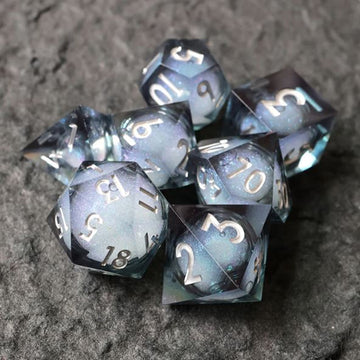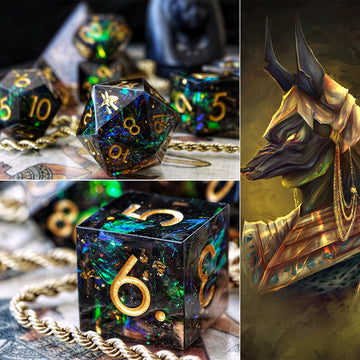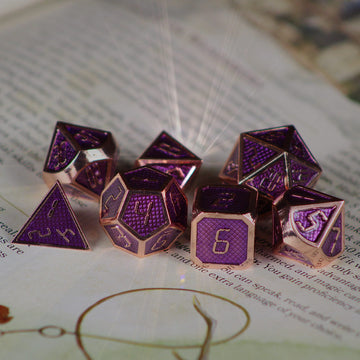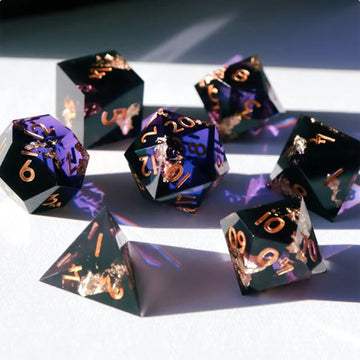All the Best Methods for Role-Playing DnD 5e Long Distance Travel
By Riley Rath
Table of Contents
- We Need Several Methods for Our DnD 5e Campaigns
- Summary if Dnd 5e Long Distance Travel Rules as Written
- 7 Different Methods for Running Travel in DnD 5e
- DnD 5e Overland Travel DM Tips
- Conclusion: Put It All Together
(This post is part of a series on "travel DnD 5e." Read the first post here. For more on exploration, start here).
We Need Several Methods for Dnd 5e Overland Travel
In a previous post, I talked about how travel is usually necessary for a Dungeons and Dragons (or similar TTRPG) adventure, but the rules-as-written make it confusing and boring, so most tables skip it... so we skip it.
But that doesn't solve the problem... we need better Dnd 5e overland travel.
Cuz while the original 1974 version may not have had expansive homebrew and overland travel modules (like Storm King's Thunder)—you had to get a 3rd party supplement—worlds demand it... today's DnD is about so much more than getting from point A to point B.
Like, you know how there is "no WRONG way to eat a Reese's"? Well... in a similar way... there is no RIGHT way to travel in DnD 5e.
Fun 5e travel is situational... it depends on your players, where you are in the story, and the destination up ahead... if you try to shoe-horn in a single method for every situation, you only continue the stereotype that DnD travel sucks.
How you get there often (though not always) matters.
There are a lot of different ways to run travel in DnD 5e, and this post goes through them all and helps you choose which one is best for you. This post is part 2 of our travel series, the goal being:
- To make travel a REAL option in your campaigns.
- Add a different, fun flavor of adventure into your DnD campaign.
- Add something you and your players will look forward to.
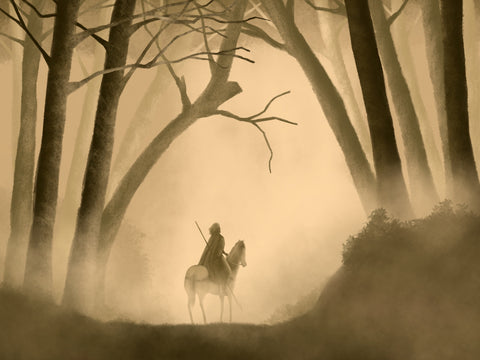
Summary of 5th Edition Overland Travel Rules as Written
So in our other post, we covered the DnD 5e overland travel rules and why they suck. Not pulling punches here: WOTC rules and nonexistent guidelines are hot garbage and the reason no one enjoys traveling during adventures or runs it in their campaigns.
Here is a summary of the rules:
- When traveling, the players choose a travel pace. This dictates their movement speed.
- Different travel speeds mean players cover a certain number of miles/hexes in a day, and each have different consequences.
- If the travel pace of the creatures in your party are different, then you will move at the rate of the slowest creature (so be aware of the races of your party composition).
- If you travel at a fast pace, you take levels of exhaustion that require you to take a long rest in order to return to normal.
- Traveling at a normal pace results in no penalties or benefits.
- But if you move at a slow pace, you can move stealthily by moving at half speed.
- Rangers can travel easier through difficult terrain.
- Pages 111 of the DMG detail how players need to keep track of rations and foraging.
- Travel often includes wilderness survival encounters, such as sinking swaps, rushing rivers, and avalanches.
7 Different Methods for Running DnD 5e Long Distance Travel
(Note: While many different DnD content creators offer multiple travel methods, the Dungeon Dude was, imo, the most comprehensive. Watch it here).
Solution 1: Narrate and "Hand Wave" Travel
I know... this post is about making dnd 5e overland travel fun... but a sure-fire way to make it NOT fun is to ALWAYS role-play travel every time the players go anywhere! I insist... DO NOT RUN TRAVEL JUST FOR THE SAKE OF TRAVELING!
Ginny D comically elaborates on this. Watch the whole thing here, but here's a summary: most of our attempts to spice up travel just ends up as filler. Which is a boring waste of time for you and everyone at the table.
Sometimes the distance is too short... or too safe... or too boring to justify spending the time. Sometimes the narrative will suffer too much if you take all the time to travel somewhere. And sometimes the mood of the players or tone at the table demands you get to the point. Regardless, at some point in your adventure, you will discover that narrating the journey is the best choice in that particular moment.
For example, unless there is bad weather or a threat waiting for them (due to their decisions, of course), I usually skip travel if my party is backtracking the same route. There is an argument to be made that the party's familiarity with the route would make it much harder for them to run into dangerous encounters.
This is the "Dnd Fast Travel" method... plot armor for player characters.
Another reason to skip traveling is if the destination is guaranteed to be 1,000% more interesting than the journey... you don't want travel to distract a highly-immersed and engaged table. Maybe after many sessions of investigating, they JUST discovered the location of an ancient dwarven stronghold... you are probably going to want to carry their excitement straight to the entrance to the cave network rather than waste it on a slog of goblin ambushes on the road.
When skipping dnd 5e overland travel, just have three or four sentences describing what the characters see, how fast they travel, etc. and then have them arrive at the destination. No dice rolls... no random encounters... no supplies... no nothing. Just get there!
Solution 2: Roll Every Hour
This is straight from page 106 of the DMG. Have players roll survival and perception checks every hour and roll some sort of random encounter every hour. The "random encounter" does NOT equal combat... it can be an NPC, a pretty view, a discovery... etc.
This is surely going to result in the 6 encounters for which the DnD 5e rest system was designed. It will certainly drain the PCs hit points, spell slots, and other resources. Which is great... and very much like video game RPGs. However, it will also make dnd 5e long distance travel take FOREVER!!!!!
Don't do this unless you are hella hardcore and want to have your adventure be as realistic as possible, measuring exact distances. It is maaaaaybe an option if your entire adventure is just one long travel session (like in Lord of the Rings)... but even that has plenty of narration.
I believe this isn't travel at all... it's a mock Final Fantasy RPG mechanic!
It's just standard DnD! It, like solution 1, gets rid of long distance dnd travel, but does so by stretching it out so much that it becomes the game itself.
In my opinion, the fact that the Dungeon Master's Guide only offers these two solutions shows how much WOTC dropped the ball. It's been 9 years, everyone... you are professionals... come on.

Solution 3: DnD 5e Overland Travel Takes One Hour of Playtime
This is the most popular suggestion for fixing dnd 5e overland travel. Luke at the DM Lair makes the case that DMs should set aside 1 hour for travel. This is an hour of real-world activity. This hour would be enough for a short, 30-minute combat encounter, maybe a 10-minute discovery, some role-playing, and narration. He also points out that random encounters like these provide an opportunity to use fun monsters and creatures that won't otherwise come up in your game/plot.
And while I love the DM Lair... what he does... and understand where he is coming from... and agree that this is sometimes great... I respectfully disagree with this method. I think that any of the other methods would result in both a better game experience and better story.
Admittedly, if the party is traveling through a mountain pass or a single forest, then it works fine. But if they are traveling across continents or oceans? Or across wildly different climates? Or for so long that the seasons change? The "one single encounter" method is rarely the right way to run dnd 5e overland travel. As stated previously, the "random encounter" just makes traveling take much longer than it needs to.
Order of the Stick has a great comic that makes fun of this... and points out how weird it is. It is one of the only times players KNOW they will get a long rest as soon as the battle ends. Which means... they will throw everything they got. Hold nothing back. After all, why not? They will just long rest and get it all back just before they reach the dungeon entrance. No stakes... no consequences... no choice... no fun... because it is a meaningless encounter that does not impact the players, the story, or their state as they arrive.
However, if you insist on sticking to this method, the Dungeon Dudes make an amazing point that you must heed. They suggest you treat the single travel encounter as a "dungeon room 0" that foreshadows what lies in wait at the destination. This method builds anticipation, creates a sense of the passage of time, while also getting the party quickly to the action.
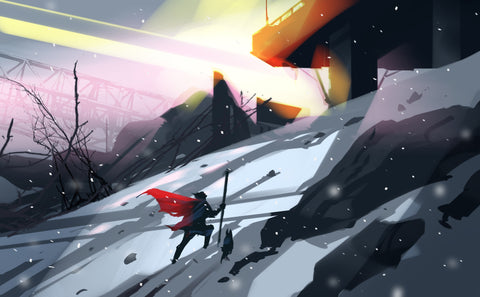
Solution 4: When All Else Fails... Run a Skill Challenge!
A skill challenge is widely considered the best thing 4e gave to us. Here is how it basically works:
- DM says the players will resolve an encounter more cinematically rather than with a social or combat encounter.
- The DM sets an appropriate DC (difficulty class).
- The DM sets the scene, describing the threats and obstacles the player characters have to overcome.
- Each "round," players select a skill check (or saving throw) to make.
- If the player succeed a certain number of times, they win the skill challenge and continue their journey.
- If the players fail a certain number of times, then they fail the skill challenge and a new scene begins.
This is the method Matt Coleville uses (check out Matt Coleville's video here). A skill challenge can bring some tension and reduce an otherwise complicated and lengthy encounter into something that is quick, cinematically exciting, and allows players to shine in different ways. They can be used in DnD 5e overland travel for anything from navigating the wilderness, surviving a flood, or socializing with random passersby on the road. Like a montage in a movie, it is a great way to accomplish A LOT in a short amount of time.
Now, personally, I believe too many people rely on skill challenges to accomplish too much in their campaigns. That said, they firmly belong in the exploration pillar, and therefore also have their place in dnd 5e travel mechanics. In my games, they are particularly helpful to quickly backtrack across terrain the party is already familiar with. Long story short: a skill challenge can be a useful travel tool and, when done well, very fun... especially when combined with travel roles (see the next travel post... HERE).
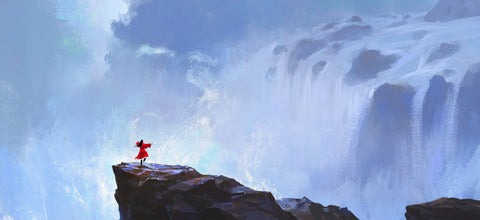
Solution 5: Let Dnd 5e Overland Travel Take a Single Game Session (or Two)
**If the first few solutions are about minimizing the journey time as much as possible, then the final few are about getting the MOST out of it**
If you want to be intentional about weaving travel into your DnD campaign and table culture, then I definitely advocate setting aside at least a session to make it fun. But how do you design a whole session around getting somewhere?
The Dungeon Dudes offer a helpful image you are probably familiar with: Design the route(s) like you would desgin a large dungeon. Give their journey a clear structure with multiple ways to go. But instead of "rooms," you have encounters and alternation between social, combat, and exploration encounters. And don't forget to narrate the areas as they travel through and in between each encounter!
This method creates 5e travel encounters, which solves the principle problem facing everything that belongs to the exploration pillar... the lack of scenes.
Oh, what was that? Worried your adventurers will have the benefits of a long rest for each encounter? BOOM... use a rest mechanic I first heard about on We Speak Common: "It takes 24 hours to gain the benefits of a long rest an 8 hours for a short rest."
Why apply this to dnd 5e overland travel? Because when you are on a journey... whether it be by plane, sea, car, horseback, or on foot... it is TIRING. It takes it out of you!
**I expand on this in the third travel post, which contains—in my not-so-humble opinion—the best way to play travel in most dnd campaigns.**
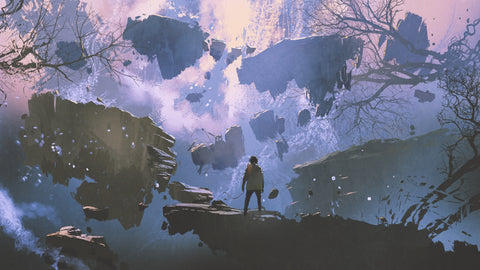
Solution 6: 5e Travel as an Entire Adventure Arc
This solution is similar to solutions 2 and 4. You don't roll every hour like in solution 2, but you also don't design the route like a dungeon in solution 4. It is getting every ounce of fun out of 5e travel... but it is also the most time consuming. With this method, the journey IS the destination; you'll spend anything from a handful of sessions to months or even years on the journey. Here are some situations for which this bold strategy works best:
- If the setting/environment the players are moving through is particularly dangerous (ex: Chult in Tomb of Annihilation).
- If the party begins due to some common, basic reason and you want to reveal the plot through what they encounter along the road.
- If the party joins a caravan, or the crew aboard a boat, and you want to give them ample time to get to know the NPCs.
- If the party is fleeing and needs to rebrand, redefine, or rediscover who they are before they dive back into the main plot again.
- If you want your campaign to have a more episodic or anthology format (like Avatar: The Last Airbender). You slowly build the overarching plot, but have separate mini-adventures that add variety to your campaign.
One thing I love about this method is how much downtime there is. Players will have plenty of opportunities to track rations, forage in the forests, and interact with villagers along the road.
And though the road may be lonely, the party can keep each other company! Periodically roll which player characters make small talk. It's a great opportunity to discuss things outside of the adventure, open up, and create more complex characters.
Solution 7: Do a Hex Crawl!
Hex crawls are a specific mechanic invented to marry exploration and travel together. Typically, they are best when parties are searching the wilderness, rather than traveling across roads and communities. For these reasons, it will be receiving special attention in an upcoming blog post!
"What About Planar or Sea Travel?"
Dungeons and Dragons is a fantasy game that takes players on epic adventures across the outer and inner planes. However, planar travel in dnd 5e is all about magical settings that are different from standard Dnd 5e overland travel. They are covered in our Travel DnD 5e Guide.
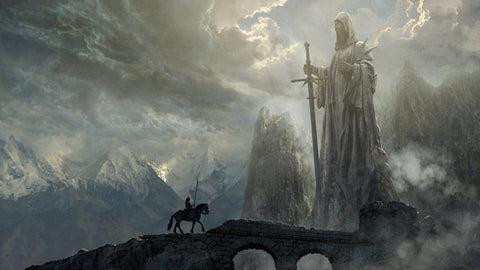
DnD 5e Overland Travel DM Tips
**There may be no "one size fits all" method... but here are some tips that always work no matter which way you choose to run it: sure-fire tips and tricks, starting with the most important...**
A) Narrate the Surroundings Well and Often
When you travel in real life, you get out of your familiar surroundings and are thrust into the big, wide world. New settings, new cities, new peoples. And all of these different settings come with unique sights, sounds, tastes, smells, and sensations... and they are MEMORABLE.
Guy from How to Be a Great GM points this out. He looked back on his backpacking trips and realized that what he remembers are the VIEWS from the mountain top. You know what he DOESN'T remember? Packing his food for the trip, driving to the trail, or setting up a tent.
So DMs... you gatta regularly narrate what the characters are traveling through... like, A LOT.
- When they enter a new area...
- When they come across something that you need to draw their attention to...
- And/or if 10 minutes have passed and the image in the mind's eye is fading...
Dnd 5e Overland Travel is part of the exploration pillar; for players to explore, they need to visualize the environment their characters are in. So always lean on over-narrating.
And players... as the DM actively narrates, you must actively visualize. It doesn't happen passively and requires intentional effort. But trust me, it will be worth it! The adventure will feel so much more fantastic and cinematic.
B) Travel When the Player Characters Are at Lower Levels
In the previous post, I said travel can help the world feel dangerous and give it a sense a scale. That is particularly true when your players are level 1 pip-squeaks. I mean, if a Giant Rat can kill them... how are they going to fare against something as common as an Owlbear?
On the flip side, this is particularly NOT true when they are bigger and stronger... starting around level 9. At that point, they will have access to spells like Magnificent Mansion and Teleport, which will turn arduous trekking into a walk in the park. Simply put: the tension, wonder, and experience of travel matters at lower levels.
As your players level up and get stronger and stronger, they will find the bloodthirsty bandits that gave them such trouble are now barely an inconvenience. So much so that you can role-play a bandit encounter rather than roll it! But if you traveled at lower levels, narrating an easy battle at higher levels will reinforce just how much stronger the players have gotten! They will think "wow... what used to take us several sessions now takes just 5 minutes!"
So if your players want to enjoy traveling in your adventure, YOU HAVE TO START EARLY. Because by level 15, players will be throwing their heads back in laughter when warned of the trek to the mountains... cuz last session they used "Gate" to magically traverse the outer planes of the cosmos...
C) Maintain 3 Traveling Basics
The "basics" include three things:
- Financial/material cost
- Marching order
- Conversation
DnD parties often adventure for potential riches... but getting there also costs them riches. Even in the real world, long distance travel is a dangerous and expensive adventure. Ask how many taverns they stay in, what kind of food they plan on eating, what supplies they need, etc. They gold you give them is for so much more than fancy armor and magic items!
Does this mean you have to track every little thing? Heavens, no.
But...
- If they fall into some rapids and crash against rocks... yeah, maybe their equipment should be damaged.
- And if they choose to stay at taverns... yeah, refer to the lifestyle expenses on page 157–158 of the PHB.
- And if they choose to camp in bad weather for a week... yeah, give them a level of exhaustion until they get good sleep in a warm bed.
The Dungeon Coach also pointed out how helpful it is to have the players decide on a "standard" marching order. Knowing who is where will come in handy when there is some sort of encounter. The DM can seamlessly transition from narration to encounter, keeping the pace of the game exciting.
And if I may add to this point, a lot of stuff happens when the players are NOT on the road. Knowing what the characters are generally up to is better than asking them every time they break camp. So have several other "marching orders:"
- Who keeps watch when...
- What characters do at a tavern...
- What they look for when they enter a town...
Finally, just like in the real world, dnd 5e overland travel can be peaceful and uneventful. And so what do people do in those situations? They talk to one another! They catch up, ask random questions, play "I spy with my little eye," in the back of the station wagon/horse wagon!
If your table hates role-playing, then maybe this isn't for them. But my table loves it, so what I do is set up two random tables: A) characters and B) topics. If my players have nothing particularly exciting to talk about, I roll rive for characters and once for topics. And boom... in between dnd 5e overland travel encounters, those two characters have to have a conversation about that topic!
Sometimes it is just silly and fun, and other times characters learn how to fight better in combat encounters, and other times there are HUGE reveals that never would have happened!
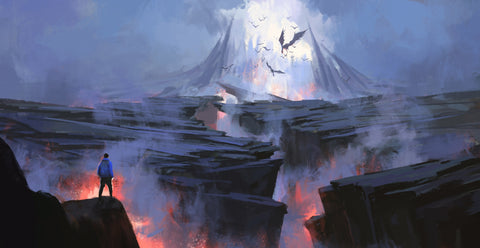
Conclusion: Put It All Together
There you have it... seven suggestions for better dnd 5e overland travel... each of which works great with five additional tips on how to make it more fun and interesting for everyone at the table.
In the hands of a skilled DM, each of these will work pretty well. However, each are forgetting one, crucial element... a missing piece that, until added, will leave the "travel dnd 5e puzzle" incomplete. The next post (read it here now) discusses that missing piece, as well as 3 super-simple mechanics you can use to make journeying across long distances truly special.
But to wrap this up, here is a summary:
The 7 Methods of DnD 5e Overland Travel:
- Hand wave it away... skip to the "good part"
- Roll every hour
- One encounter/hour of play time
- Take a single game session (or two)
- Do a skill challenge
- Spend the entire adventure arc traveling
- Run a hex crawl
3 Suggestions for Better Travel Gameplay:
- Narrate your surroundings well and often
- Explore when player characters are at lower levels
- Maintain the 3 basics
Riley Rath

Riley is a freelance tabletop games copywriter, content writer, and marketer based out of Spokane, WA. When not playing or writing about board games or DnD, he is busy with family, hiking, cooking, and gardening... very hobbit-like for a 6'4'' dude.



